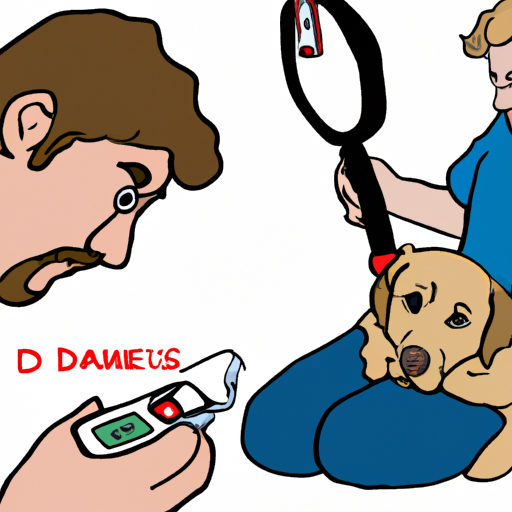As a caregiver to a furry friend, it’s important to understand the signs and symptoms of diabetes in dogs. This guide will provide you with the key indicators to watch out for, ensuring that you’re equipped with the knowledge necessary to give your pet the best care possible.
1. Introduction to Diabetes in Dogs
Diabetes is a chronic disease that affects both humans and animals. In dogs, it’s most often a result of the body’s inability to produce insulin or use it effectively. This results in high blood sugar levels, which can lead to a range of health problems.
2. Understanding the Signs and Symptoms
2.1 Increased Thirst and Urination
One of the most common symptoms of diabetes in dogs is increased thirst and urination. Your dog might start drinking more water than usual and may have accidents in the house. This is because the body is trying to flush out the excess glucose in the blood.
2.2 Weight Loss Despite Increased Appetite
Another symptom to watch for is unexplained weight loss, despite your dog eating more than usual. This is because the body isn’t able to use the glucose in the food for energy.
2.3 Fatigue and Weakness
Your dog might seem less energetic than usual. They may not be as excited about walks or playtime, or they might seem to tire easily. This is because their body isn’t getting the energy it needs from food.
2.4 Chronic or Recurrent Infections
Dogs with diabetes are more prone to infections, especially urinary tract infections and skin infections. This is because high blood sugar levels can suppress the immune system and create an environment where bacteria can thrive.
3. Risk Factors for Diabetes in Dogs
Certain factors can increase a dog’s risk of developing diabetes. These include:
- Age: Diabetes is more common in middle-aged and older dogs.
- Breed: Certain breeds, such as Beagles and Dachshunds are more prone to diabetes.
- Obesity: Overweight dogs are at a higher risk of developing diabetes.
- Sex: Female dogs are twice as likely to develop diabetes as males.
4. Diagnosis and Treatment of Diabetes in Dogs
If you notice any of the above symptoms in your dog, it’s important to consult with a veterinarian as soon as possible. They can perform a series of tests, including blood tests and urine tests, to diagnose diabetes.
Treatment typically involves insulin injections, which you’ll need to administer at home. Your vet will provide you with detailed instructions on how to do this. In addition, you might need to make dietary changes to manage your dog’s condition.
5. Managing Diabetes in Dogs
Managing diabetes in dogs involves regular monitoring and treatment. Here are some steps you can take to help your pet live a healthy life:
- Monitor blood sugar levels regularly.
- Administer insulin injections as prescribed by the vet.
- Provide a balanced diet.
- Ensure regular exercise.
- Regular vet check-ups.
6. FAQ
What breeds are most at risk for diabetes?
Certain breeds such as Beagles, Dachshunds, and Poodles are more susceptible to diabetes.
Can diabetes in dogs be cured?
There is currently no cure for diabetes in dogs, but it can be managed effectively with insulin therapy and lifestyle changes.
What is the life expectancy of a dog with diabetes?
With proper management, a dog with diabetes can live a normal, healthy life. The exact life expectancy can vary based on the dog’s overall health and how well the diabetes is managed.
By understanding the signs and symptoms of diabetes in dogs, you can ensure that your pet gets the medical attention they need as soon as possible. Remember, the key to managing diabetes is regular monitoring and a consistent treatment plan.



